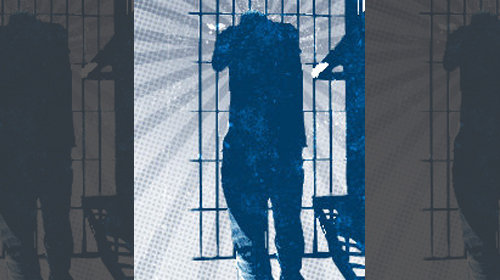One Year Longer? Why Won’t DHS Protect Its Detainees under the Prison Rape Elimination Act Right Now?


Last week, the Department of Justice released the long-awaited Prison Rape Elimination Act (PREA) regulations, representing the first time that the federal government has issued national standards to help end sexual abuse in correctional facilities. The regulations are two years late and a lot of harm has been done in their absence, but now they will help protect important constitutional and human rights and ensure safe and fair correctional facilities that assist prisoners in rehabilitation rather than needlessly brutalizing them. This is the second of three blogs marking the occasion.
The Prison Rape Elimination Act was passed by a unanimous Congress in 2003, with regulations due by June 2010. It was clearly intended to cover all detainees, civil and criminal. Two years later, the Obama administration at last released the final implementing rules for PREA. Commendably, the Department of Justice reversed its prior position that PREA doesn’t cover all immigration detainees. Yet the Department of Homeland Security – despite an abysmal track record of preventing and investigating sexual abuse and assault in its facilities, which was recently exposed on PBS’s Frontline – got a 360-day extension on PREA compliance.
Even worse, when DHS submits its work next year there’s no guarantee that PREA will be fully implemented in its facilities. In fact, based on DHS’s recently released 2011 Performance-Based National Detention Standards (PBNDS) – which are riddled with omissions and gaps when compared with PREA and don’t yet apply in any of the 250 immigration detention facilities – there’s every reason to believe DHS’s coverage will be inferior for the nearly 400,000 people it detains annually. The message to this overwhelmingly Latino detainee population is that they’re not worthy of immediate and complete PREA protection.
For immigration detainees, therefore, it’s a deeply disappointing announcement. ACLU clients are courageously challenging DHS on its inability to prevent sexual abuse and assault.
Claudia Leiva Deras, a 27-year-old woman who fled domestic violence in Honduras, suffered the consequences of DHS’s systemic failure to protect. During her four months in immigration custody at a DHS-contracted facility, Claudia recounts that she was subjected to violent physical and sexual assaults by another detainee. Frightened that reporting these attacks would lead to retaliation from her abuser, Claudia filed written grievances asking for medical attention to her injuries. Her pleas for a doctor were refused. When Claudia did report the assaults and her injuries, she was still denied medical examination, STD testing, mental health care, and counseling, in spite of her attorney’s requests. The facility staff, Claudia remembers, offered her nothing but a Tylenol.
The ACLU of Texas recently filed a class action lawsuit on behalf of three immigrant women named plaintiffs who were sexually assaulted by a male guard while being transported – in contravention of Immigration and Customs Enforcement policy – from the T. Don Hutto Family Residential Center in Taylor, Texas. The guard was later convicted of state and federal charges. One of the women assaulted, Sarah, who escaped to the U.S. to avoid repeated beatings and rapes by a military commander in Eritrea, described her ordeal at Hutto: “As he was doing this I was having a flashback to what happened to me in my home country. I thought, this man is never going to take me to the airport, he is going to take me to a certain place where he will do whatever he wants to me.” All three women came to the United States seeking asylum, but rather than finding safety in this country they were instead sexually assaulted in DHS custody.
At the Eloy Detention Center in Arizona, Tanya Guzman-Martinez, a transgender woman, was placed in housing with men. Each time she sought help to prevent sexual abuse, she says she was threatened with segregation rather than protected. She recounts that she was sexually assaulted twice: One incident involved a detention officer who, after repeated harassment, maliciously forced her to ingest his ejaculated semen and threatened to deport her if she did not comply. Tanya immediately reported the assault, and the detention officer was later convicted. Despite this attack, ICE and facility staff allegedly did nothing to protect Tanya from further abuse. In a second incident that Tanya endured five months later, she describes being sexually assaulted by a male detainee in the same housing unit.
DHS chose not to provide full and immediate PREA protection for detainees like Claudia, Sarah, and Tanya were – nameless men and women who are at this very moment vulnerable in immigration detention facilities. One year is an inexcusable additional delay. ICE’s internal standards, which will be the blueprint for its PREA regulations, leave enormous gaps in coverage such as excluding detention facilities holding people for under 72 hours. The Bureau of Justice Statistics just released a study on sexual victimization, showing that almost half of former state prisoners were retaliated against for reporting sexual abuse. ICE’s standards prohibit retaliation, but unlike PREA they don’t provide necessary guidance on how to prevent it.
A year from now, DHS must produce regulations that are fully PREA-compliant. Otherwise the tragic suffering resulting from rampant sexual abuse and assault in immigration detention facilities will continue unabated.
Learn more about sexual abuse in prison: Sign up for breaking news alerts, follow us on Twitter, and like us on Facebook.

